Murals at King George Station celebrate local Indigenous Nations
Murals at King George Station celebrate local Indigenous Nations
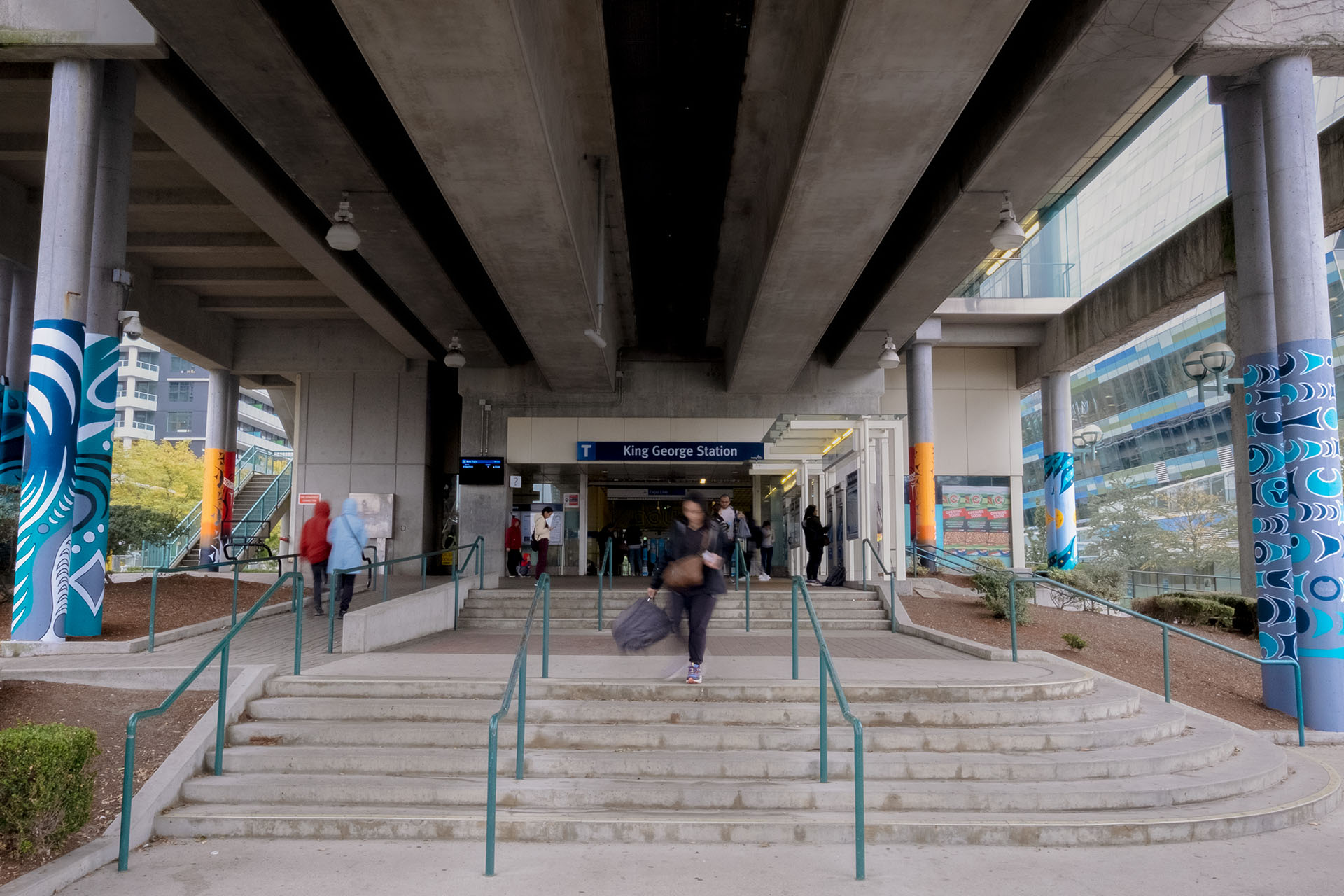
Travelling from King George Station? You may have noticed Indigenous art adorning the columns at the station entrance!
We partnered with artists from q̓ic̓əy̓ (Katzie First Nation), q̓wɑ:n̓ƛ̓ ən‘ (Kwantlen First Nation), and se’mya’me (Semiahmoo First Nation) to display a series of permanent murals at the entrance to King George Station.
These murals celebrate the rich culture and history of the Indigenous Nations, while encouraging passersby to reflect on the meaning of the land that we travel on today.
We commissioned four artists for this project: Rain Pierre from q̓ic̓əy̓, Natache Gabriel from q̓wɑ:n̓ƛ̓ ən’,and Roxanne Charles and Easton Arnouse from se’mya’me. These murals were painted by the Vancouver Mural Festival.
These murals are the first cultural recognition pieces from q̓ic̓əy̓, q̓wɑ:n̓ƛ̓ ən‘, and se’mya’me on our transit network.
Learn more about the artists
Rain Pierre, q̓ic̓əy̓ (Katzie First Nation)
Rain has been brightening up communities as an artist since 2016. His vision is to captivate emotions and make a statement that we need to work together to make a better tomorrow through his art. Rain’s first column uses a red design that serves as a tribute to the matriarchal women of Katzie, with the trees to remind us of where we come from. It is also his tribute to the missing and murdered Indigenous women (MMIW) of Canada.
The second column features an orange design for Orange Shirt Day. The four hummingbirds represent the four seasons. The orange is a tribute to the children that have passed in residential schools, but the hummingbirds represent their spirits being beautiful.
Natache Gabriel, q́ʷa:n̓ƛʼən ̓ (Kwantlen First Nation)
Natache Gabriel is an emerging artist and mother of four from q́ʷa:n̓ƛʼən ̓ (Kwantlen First Nation)̓. She currently lives with her fiancée Taylor and their children on Kwantlen, in Fort Langley.
Her pair of columns portray a sun and moon design about balance, and connection to the everyday commute in that people will travel in the morning through to the evening on the SkyTrain.
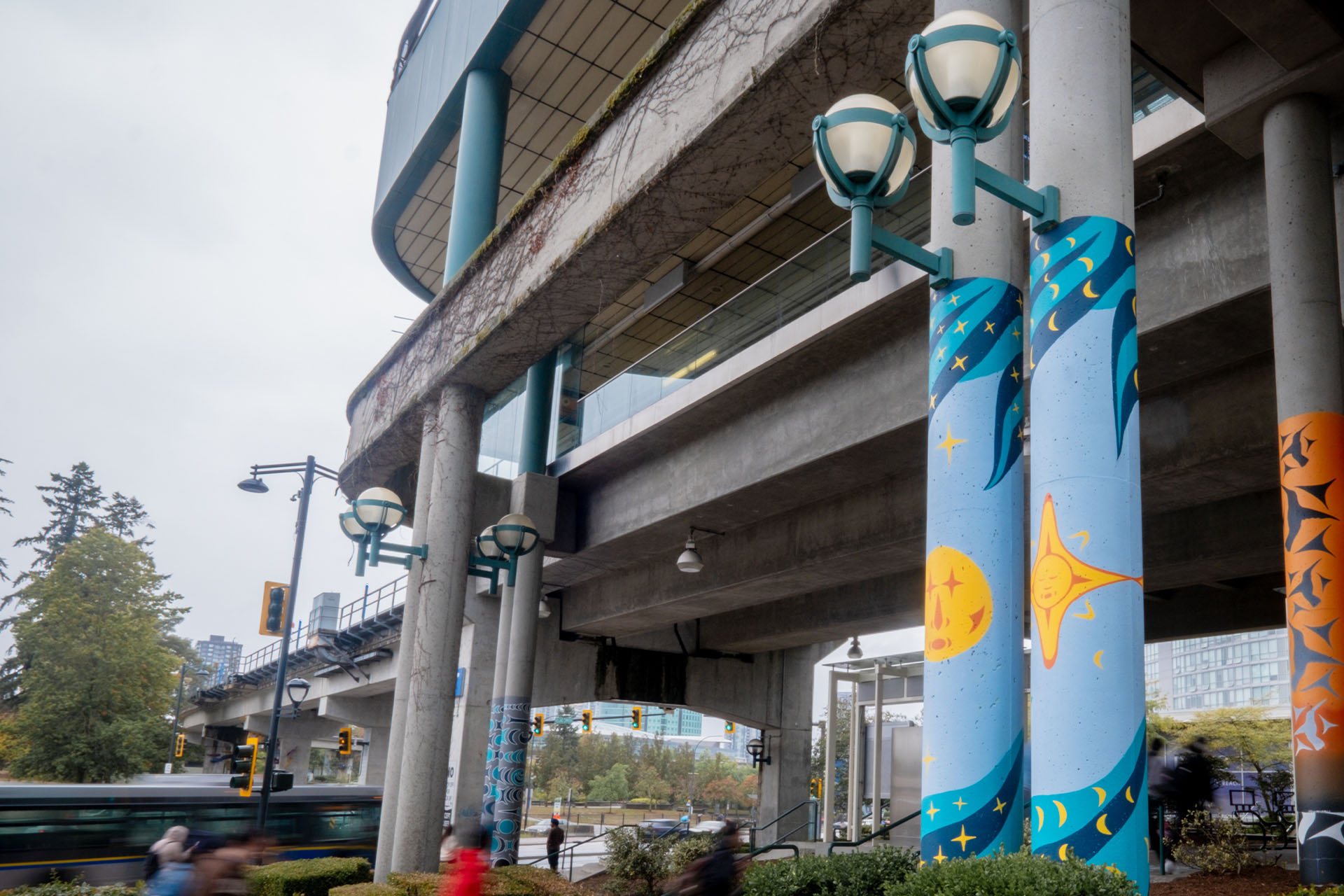 The wolf design is an ode to the nation she’s from. Kwantlen or q̓ʷɑ:n̓ƛ̓ən̓ meaning “tireless runner” or “tireless hunter.” Natache thinks that as Indigenous people they need to be present and seen — and in this case, through artwork.
The wolf design is an ode to the nation she’s from. Kwantlen or q̓ʷɑ:n̓ƛ̓ən̓ meaning “tireless runner” or “tireless hunter.” Natache thinks that as Indigenous people they need to be present and seen — and in this case, through artwork.
Roxanne Charles & Easton Arnouse, se’mya’me (Semiahmoo First Nation)
Roxanne Charles of Semiahmoo First Nation is a cultural historian employing means of visual representation, oral history, and ceremony. Methods which have been utilized by Semiahma People for thousands of years. Her work explores and documents a variety of issues that reflect her daily life such as spirituality, identity, urbanization, trauma, and various forms of systemic violence.
Easton Arnouse is a 19-year-old creative artist and photo documenter. Based in the home of his ancestors Native to the Lower Mainland of British Columbia. Son to Roxanne Charles from Semiahmoo, and Joseph Arnouse of the interior Secwépemc people. His interest in art creation stems from the importance of cultural identity, self, furthermore one’s interconnection with nature and tradition. Easton is on a path to represent the need in preserving Indigenous methods, belief systems, and ways of living.
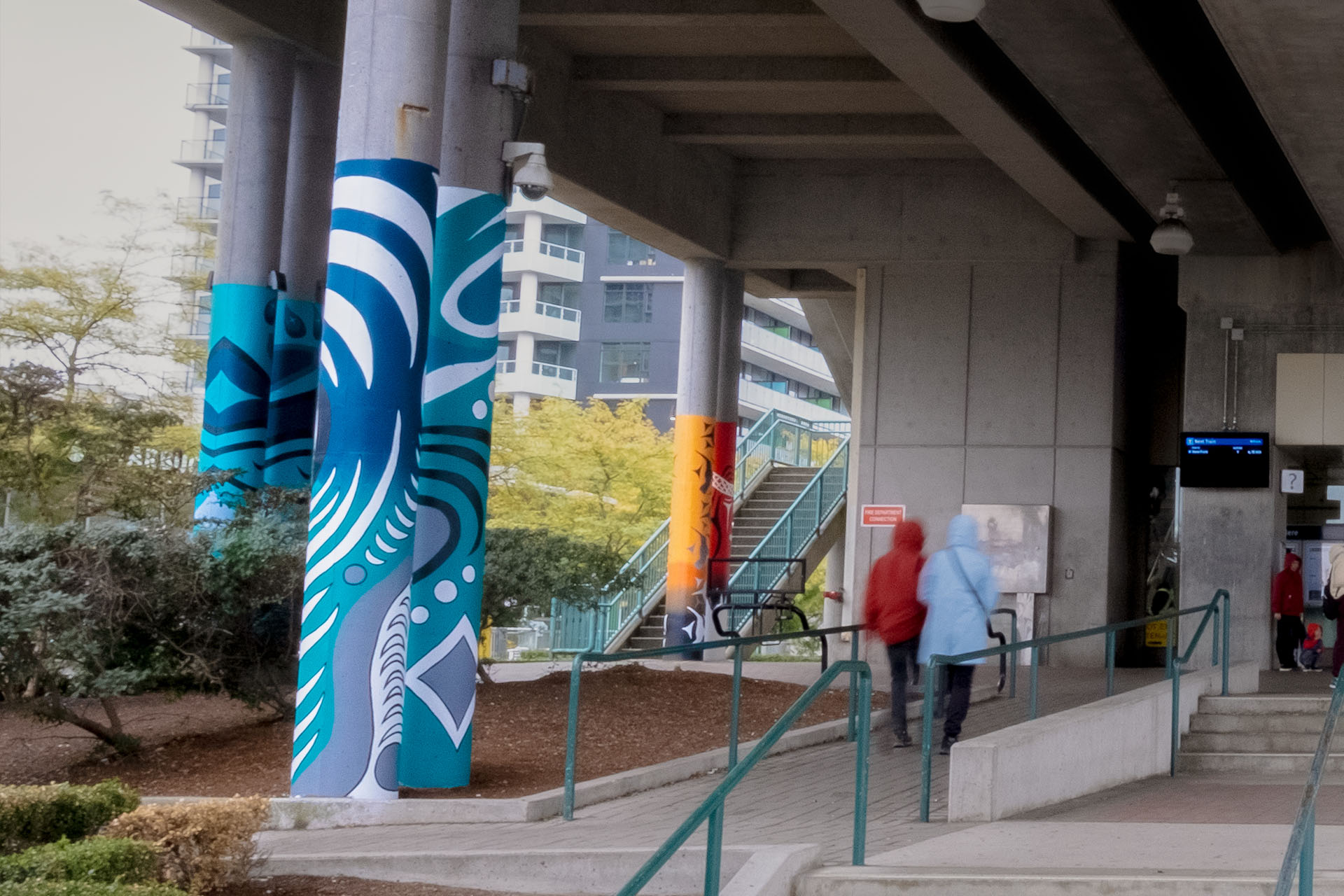 These designs were inspired by Xwim al e qen ::, the flow of the river, and by Salish sheep horn jewellery which are often embedded with water symbols. The pillars honour the lifeline of Indigenous people which are these water ways and the resources they provide, and for which they hold deep gratitude. This can be seen in everything, including their technologies – which are often modelled after their life givers; ensuring a portion of your catch is released so there will be an abundance of fish for future generations. The Se’mya’me thrived prior to contact by managing the largest reef net fisheries in North America.
These designs were inspired by Xwim al e qen ::, the flow of the river, and by Salish sheep horn jewellery which are often embedded with water symbols. The pillars honour the lifeline of Indigenous people which are these water ways and the resources they provide, and for which they hold deep gratitude. This can be seen in everything, including their technologies – which are often modelled after their life givers; ensuring a portion of your catch is released so there will be an abundance of fish for future generations. The Se’mya’me thrived prior to contact by managing the largest reef net fisheries in North America.
These conversations are important to understand the horrendous disposition of wealth that has transpired and continues to unsettle Turtle Island. So much can be learned from our environment. It is time for people, residents, and visitors to work hard to ensure we prioritize the health of waterways, like the Indigenous Peoples of these lands who have coexisted with nature for thousands of years, and who have made it their responsibility to care for its waterways.
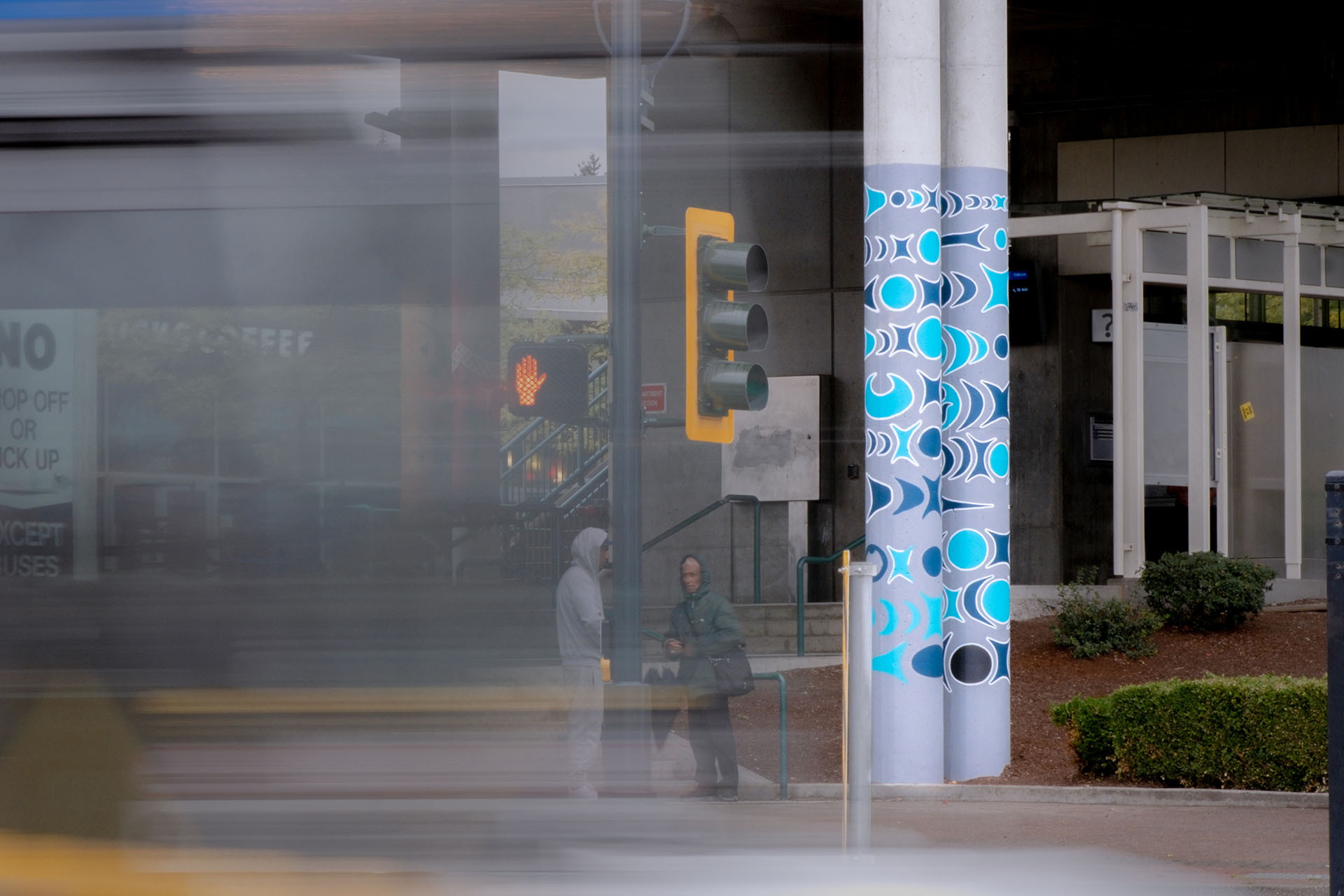


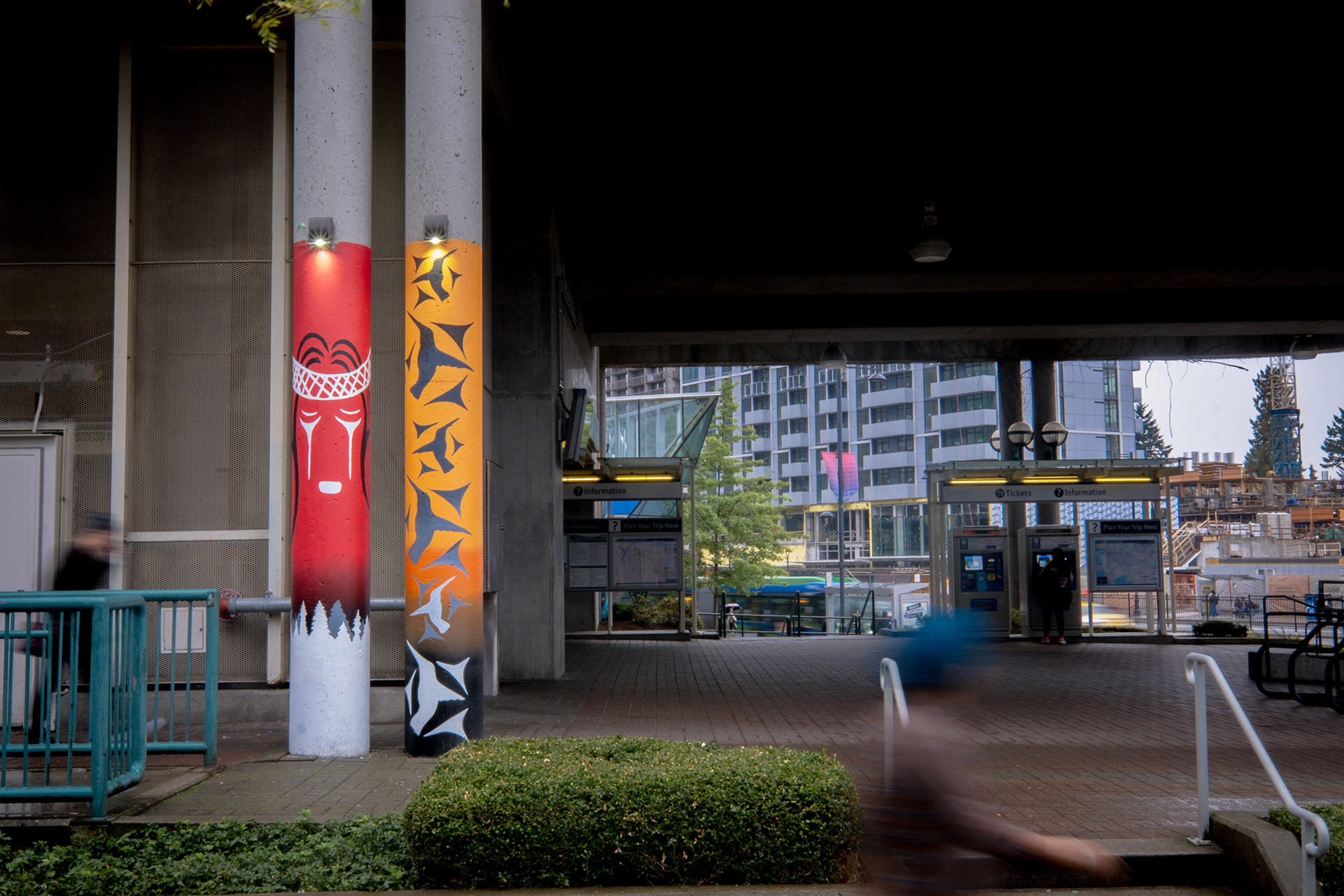
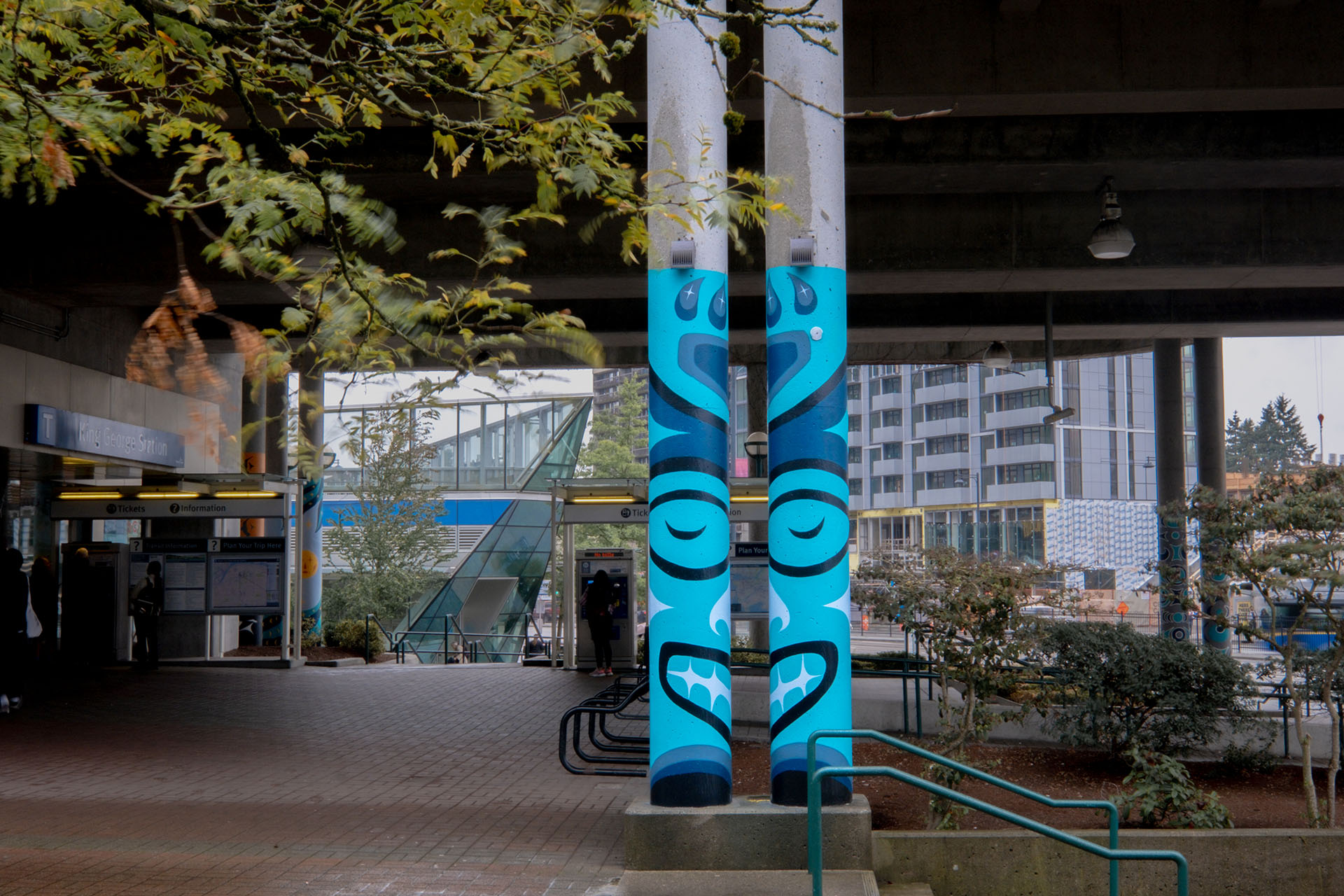




I have been watching these amazing artists for the past few weeks while waiting for my bus. Incredible work. Have enjoyed it emensly. Thank you for this.